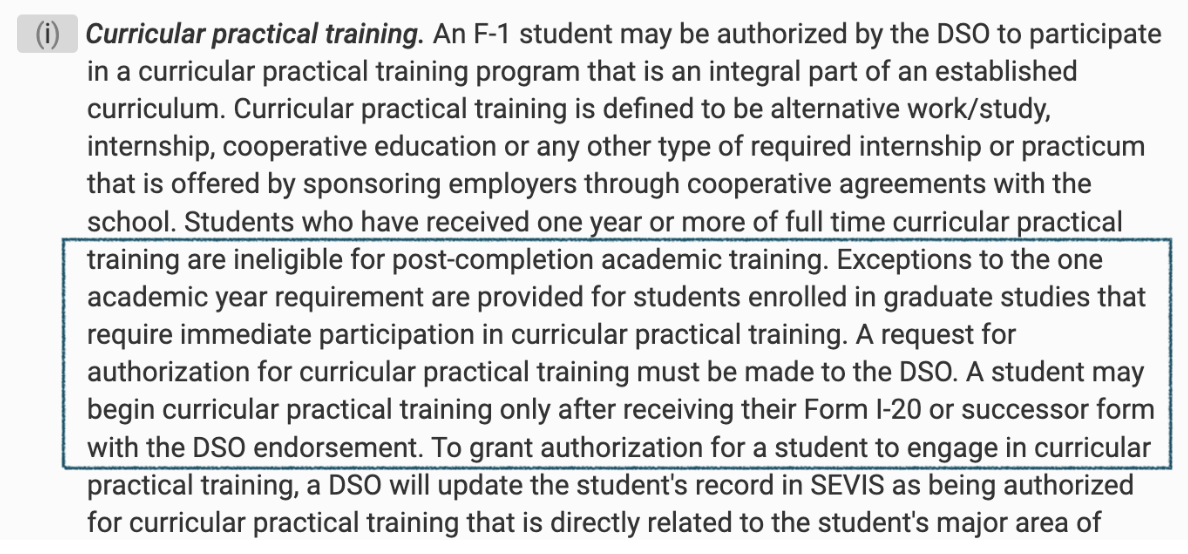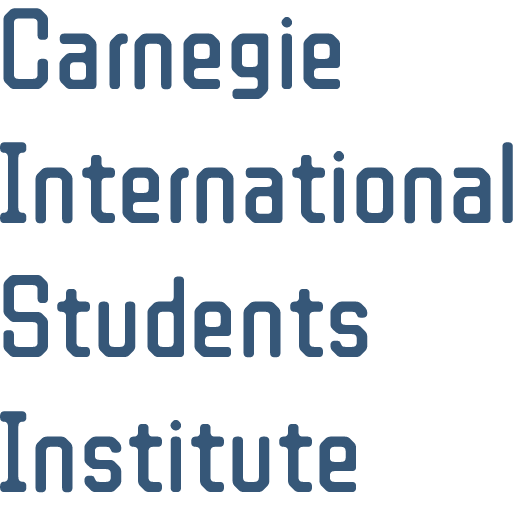5 Things to Know Before Choosing Day 1 CPT
CPT stands for Curricular Practical Training, which is a way for F1 student visa holders to legally intern or work in the United States. Typically, international students holding F-1 visas must be enrolled in a full-time SEVP-certified university program for at least one academic year before applying for CPT. However, Day 1 CPT offers students the opportunity to begin interning or working on the first day of Classes. This enables students to gain more practical work experience in the United States, thereby enhancing their competitiveness in the job market.
1.What is Day 1 CPT?
Day-1 CPT refers to a policy at some universities in the US where full-time F-1 students are allowed to legally intern or work starting from the first day of classes (or even earlier).
Some master’s or doctoral programs in the US require students to have extensive work experience during their studies in order to gain better practical experience and understanding. To facilitate this, schools offer relevant courses, enabling students to immediately apply for CPT for profession-related internships or jobs upon enrollment. The permission and application of Day-1 CPT must adhere to strict conditions and qualification reviews, including school qualification assessments. Schools must demonstrate to USCIS that students’ practical experiences are closely aligned with their course studies. Otherwise, schools will face severe penalties for violating regulations, and enrolled students will also be significantly affected.
For students utilizing Day-1 CPT, the job duties of internships or employment must be relevant to their academic studies. Students must submit company-related documents to the school’s international student office for review and obtain school approval to commence legal internships or work. Additionally, students must fulfill the learning time requirements of full-time students, attending classes punctually and completing assignments on time. Failure to meet these requirements may result in warnings or even expulsion.
2. Is Day 1 CPT Legal?
According to the following authoritative statements, Day-1 CPT fully complies with U.S. laws and regulations:
(1)Department of Homeland Security (DHS):
The DHS states that “CPT approval for pre-completion is granted only for students who are in valid F-1 status and have been enrolled full-time for at least one academic year. Note: An exception exists for students in graduate studies whose programs require earlier training.” This description confirms the official recognition of the existence of Master/Doctoral Programs with Professional Practice (i.e., Day-1 CPT program).

Source:DHS Day-1 CPT’s Legitimacy
(2) U.S. Immigration and Customs Enforcement (USICE):
USICE’s statement regarding CPT is more direct: “When you enter graduate-level studies, if your program requires relevant internship/work experience, then your school’s DSO can approve CPT work applications in the first semester.” It is evident that the existence of Master/Doctoral Programs with Professional Practice (i.e., Day 1 CPT program) is affirmed and permitted.

Source:USICE Day-1 CPT‘s Legitimacy
(3) Code of Federal Regulations(CFR):
In the United States federal regulations (CFR) Title 8 / Chapter I / Subchapter B / Part 214 / § 214.2 Special requirements for admission, extension, and maintenance of status, there is a clear provision regarding CPT: “Exceptions to the one academic year requirement are provided for students enrolled in graduate studies that require immediate participation in curricular practical training. A request for authorization for curricular practical training must be made to the DSO. A student may begin curricular practical training only after receiving his or her Form I-20 with the DSO endorsement.” This federal regulation explicitly states that students in master’s and doctoral programs can be approved for CPT work authorization on the day of enrollment, without the need to wait for completion of the first year of study.

Source:CFR Day-1 CPT Legitimacy
3. Who Will Benefit From Day 1 CPT?
The Day 1 CPT program has become a viable option for international students facing various situations due to its flexibility in enrollment and employment opportunities.
(1) Employers unable to sponsor H-1B: When employers can’t sponsor H-1B due to various reasons, employees can consider Day-1 CPT programs to continue working while advancing their education.
(2)OPT expiration with no H-1B lottery success: For students whose OPT is expiring without H-1B lottery success, Day-1 CPT programs offer an opportunity to continue working and increase their chances for H-1B selection.
(3) Students whose OPT application has been denied: Students facing OPT denial can quickly restore student status by enrolling in CPT programs, which offer flexible enrollment options.
(4) Students facing academic crises, expulsion, or urgent transfers: Day 1 CPT programs provide a swift solution for students facing academic challenges, allowing them to transfer and maintain student status without interruption.
(5) Professionals seeking further career development in the U.S. while continuing their full-time employment can opt for Day-1 CPT programs.
(6) Holders of H-1B, H-4 EAD, L-2 EAD facing unemployment: Those facing unemployment after work permit denial can transition to F-1 status for employment opportunities through Day-1 CPT programs.
(7) Parents accompanying dependents studying in the U.S.: Day-1 CPT programs offer flexible scheduling, making them an ideal choice for parents accompanying dependents studying in the U.S.
4. Factors to Consider When Choosing Day-1 CPT Programs:
(1) Accreditation and Legitimacy:
Opt for schools with recognized accreditation and a solid reputation to ensure the legitimacy of your CPT program. Schools partnered with CISI are typically well-established and accredited institutions, offering a safer choice for your CPT endeavors.
(2) Cost-effectiveness:
Evaluate the tuition fees of prospective schools and inquire about any available scholarships or financial aid options. CISI offers exclusive scholarships for new students, ranging from $600 to $1000, which can significantly alleviate financial burdens.
(3) Onsite Frequency:
Check school requirements for onsite attendance, maintaining detailed records for immigration compliance. Some schools may mandate monthly onsite classes (e.g., Monroe College), while others may only require onsite attendance once per semester (e.g., Trine University).
(4) Transportation Convenience:
Choose a school with convenient access to transportation hubs and commuting options.Consider factors such as proximity to transportation hubs (e.g., airports, train stations), availability of public transportation routes, and ease of commuting by car. Choosing a school with convenient transportation options can simplify your daily commute and enhance your overall experience.
(5) CPT Renewal Frequency:
Understand the school’s CPT renewal policy and plan accordingly to minimize disruptions, ensuring effective communication with employers. Some schools may require CPT renewal on a semester basis, while others may have annual renewal requirements.
5. Day-1 CPT Program Application Process
Applying for programs that support Day-1 CPT involves going through the normal school application process. Once you have received the school offer and transferred SEVIS to the new school, you can start applying for CPT. Typically, CPT becomes effective on the first day of classes, although some schools may allow it to be effective up to 30 days before classes start.
Here are the specific steps:
- Prepare application materials and submit the application. These materials generally include transcripts, letters of recommendation, language proficiency scores, and a Personal Statement.
- Receive the school’s admission offer and obtain the SEVIS documents.
- Before classes start, register for CPT courses and apply for CPT at the school’s international student office. Prepare materials including a. Company’s Offer Letter; b. CPT Agreement signed by the school and employer (an offer letter or employment letter can also be used instead of a CPT agreement).
- Wait for approval of CPT from the school’s international office and receive the new I-20 form.
- Verify that the employer information on the second page of the I-20 is correct.
- Start working on the CPT effective date.
- Check the school’s CPT renewal regulations, which are usually once per semester or once per year, and renewals need to be done half a month in advance.
Specific school situations may have individual variations, so if you have further questions, please contact us for free consultation!
Other Day 1 CPT FAQ
Yes. CPT is part of the curriculum and allows both full-time and part-time work. However, exceeding 12 months of full-time CPT (over 20 hours per week) may impact your eligibility for OPT after graduation. To preserve OPT eligibility, it’s safest to stick to part-time CPT, ensuring no more than 20 hours per week, or avoid exceeding 364 days with full-time CPT. If using Day-1 CPT for transition only, this doesn’t apply.
Full-time CPT duration cannot exceed 12 months (354 days), otherwise, you will lose eligibility to apply for OPT afterward. Other than that, CPT does not impact OPT application.
Before starting employment, students must obtain approval from the Designated School Official (DSO) at their university and provide an I-20 listing detailed information required for CPT, such as full-time or part-time status. Generally, CPT can become effective from the first day of classes.
Yes. If your H-1B application isn’t selected, you can choose to apply for Day 1 CPT to continue your studies in the U.S. as a student and acquire additional skills for future employment. Students can utilize Day 1 CPT opportunities to accumulate work experience during their studies while seeking new employers to sponsor their H-1B work permit.
If a student loses H-1B sponsorship, they can apply to change their status to an F1 student visa. However, the student cannot work under CPT until the change of status and CPT application are approved. Transitioning from an H-1B visa to an F-1 visa may take three months to a year.
The policy behind Day 1 CPT is to encourage students to prioritize studies with work as supplementary, using ample work experience to gain a deeper understanding of their academic subjects. If students can clearly demonstrate their educational purposes and the reasons for working during CPT, aligning with expected behaviors of international students, it should not have an adverse impact. However, prolonged absenteeism during studies, low overall GPA, or beginning work before CPT approval could raise suspicions by immigration authorities regarding the student’s educational intentions, potentially leading to issues with green card or other immigration status applications.
According to USCIS regulations, F1 students are limited to a maximum of 3 credits of online courses per semester. Therefore, any university or program claiming to offer fully online courses does not comply with regulations and may face administrative litigation risks. If students cannot complete the offline portion of the courses, they may lose their F1 visa status.
The most common format for Day-1 CPT programs is hybrid, combining online and offline courses, which both meet USCIS requirements for maintaining F1 status and cater to students’ needs of studying while working.









